ALEXANDER PHILLIP CHESLEY
(Written by Myrtle Chesley Foulger, granddaughter)
Submitted by J. Richard Rowley
Alexander Philip Chesley was born in the year 1814 in the state of Virginia. At a very young age, grandfather and his small brothers were bereaved of their beloved parents and were forced to live with an uncle, who navigated a Ferry Boat across the Chesapeake Bay. Being very dissatisfied with his newly acquired home grandfather said goodbye to his brothers and sisters, and was off for Kentucky, where some of his cousins were living. During his stay he became very well acquainted with a few of the sons of Henry Clay, the noted statesman, who at that time was known as a lawyer and teacher of law. Through the close friendship of the Clay boys, grandfather became a constant companion of their father, who had taken quite a fancy to the boy and constantly urged young Chesley to study law. Heeding his friend's good advice, grandfather became a very efficient lawyer.
He soon tired of Kentucky and traveled to Illinois, where he met and married Eliza Haws of Wayne County. His new wife had previously joined the L.D.S. Church and as in the desire of every member of the L.D.S faith Eliza hoped and dreamed of the conversion of her husband. As with most skeptics the reaction was unenthusiastically received. Initially he paid scant attention to her testimony. He was ambitious and wanted to succeed as a lawyer and to follow in the footsteps of Henry Clay. During the course of study and pondering of the Gospel Doctrine, Grandfather decided to put his mind at ease by making it a matter of prayer, as the Book of Mormon suggested. He supplicated the Lord to make it known to him through the speaking of tongues. The following Sunday in Church a man in the congregation arose and commenced to speak in this manner. After which one of the brethren on the stand interpreted it and made the remark that there was a person present who had wished to witness the speaking in tongues as a final proof and testimony that this was the true gospel of Jesus Christ. He then asked that this individual to please stand and make himself known. Grandfather acknowledged his prayer and bore testimony of its answer. This incident resulted in his baptism into the L.D.S Church.
Shortly after this the Saints were driven out of Illinois. At that time he had three children, William A., John and James Chesley. He and his family went with the Pioneers as far as Winter Quarters, where he was married to his wife's young sister, Emily, by President Brigham Young. He left his family at Winter Quarters and came on with Brigham Young's Company, entering Salt Lake Valley in the year 1847.
At the time of his entrance to the valley he was thirty years old, dark complexioned, good looking and strong. He was one of the company's most daring fighters and was often called upon to fight the Indians to protect the more helpless people in the company. He was captured by them during one attack, and placed on a horse between two Indian braves. His strength and bravery soon won the admiration of the Indians, insomuch that they desired for him to be their leader. They took him to their camp and told him he could help make war on the white man. They said they would give him a squaw and he could live like an Indian Chief. He told them he already had a squaw and that he would not help them fight his own people. This angered the Indians; and they tied him up to a tree for the night. During the darkness, and just before dawn an old squaw, who had admired his courage, crept out of her wigwam and cut the ropes, setting him free. In a few hours he overtook the company and went on with them to Utah.
In the meantime, the men in Brigham Young's camp, fearing the outcome of Grandfather's capture, anxiously requested their leader to send a search party to his rescue. Brigham Young, fearing that all of the company might be killed, cautioned the men against it. Brigham said, 'No, men, we will go on, and we will see the manifestation of the Lord regarding brother Chesley'. These words were prophecy fulfilled, for that same night, at approximately the same time, Grandfather was freed.
Alexander Phillip Chesley's name now stands on the Brigham Young Monument. in Salt Lake City, Utah, a symbol of hardships and trials undergone by each member of the company in their course of travel and constant Indian raids and attacks.
After he had helped the Saints with the necessary work of beginning homes in the new country Alexander went back to winter quarters to get his family. Here he found his young wife, Emily, had gone back to Potowatomy, Iowa, where she had given birth to a son, whom she called George Alexander. George was born on September 2, 1847. Alexander Phillip brought Emily and her mother to winter quarters, where he remained for a time for the purpose of arranging and getting proper equipment and provisions for different companies that were on their way west.
In the year 1851 Alexander Philip Chesley and his family started on their memorable trip for the Utah valley. The companies had been out but a number of days when grandfather received a message by Pony Express from John Taylor, requesting that grandfather wait at the first watering place for the 'sugar train' that was bringing equipment to start a sugar factory. They were dependent upon grandfather's knowledge of the country to pilot them safely to Salt Lake City. John Taylor had recently been in France, buying machinery to be used by the Mormons for making and refining sugar. Alexander waited two weeks before the sugar train caught up with him. He then guided them across the plains and in this way helped to bring the first sugar making machinery into Utah. The factory was set up in the southeastern part of the valley, was called 'the old Sugar House Plant', and a town was named for it, which is the present city of Sugar House.
He resided in Salt Lake City but a short time when he was sent to Provo to teach school and to make his home. He moved his family and became one of the first school teachers in Provo and was called by his friends 'Squire Chesley'.
In the early part of 1856 he was called to fulfill a mission to Australia. In May of that year he said goodbye to his two wives and nine children, and along with several other missionaries left for California where they were to take passage for Australia. Word was received that the Elders had a difficult time in reaching the Pacific coast, and records of the Church show that the party arrived in Australia, and that he was in contact with his families for about three months thereafter. Then time elapsed and word was not received again, leaving the fate of the balance of his life shrouded in mystery.
_____________
Alexander had the following children:
with Eliza Haws -
| Family 2 | Mary Eliza Haws, b. 30 Oct 1822, White County, Illinois | |||||||||||||||||||||
| Married | 1843 | Nauvoo, Hancock County, Illinois | ||||||||||||||||||||
| Children |
| |||||||||||||||||||||
with Emily Haws -
| Family 1 | Emily Haws, b. 23 Jul 1826, Fairfield, Wayne County, Illinois | |||
| Married | 6 Nov 1842 | Nauvoo, Hancock County, Illinois | ||
| Children |
| |||











































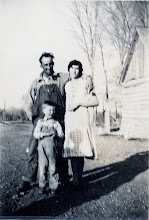

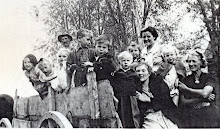
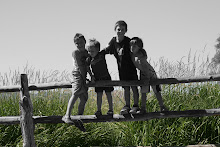
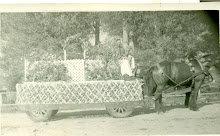
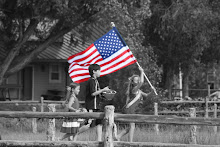
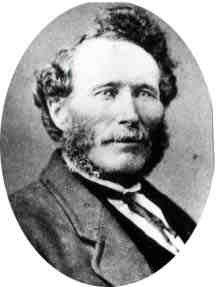
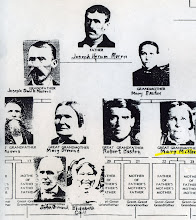
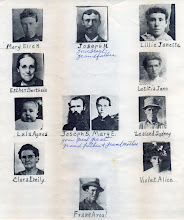
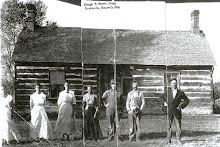
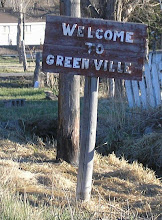
No comments:
Post a Comment